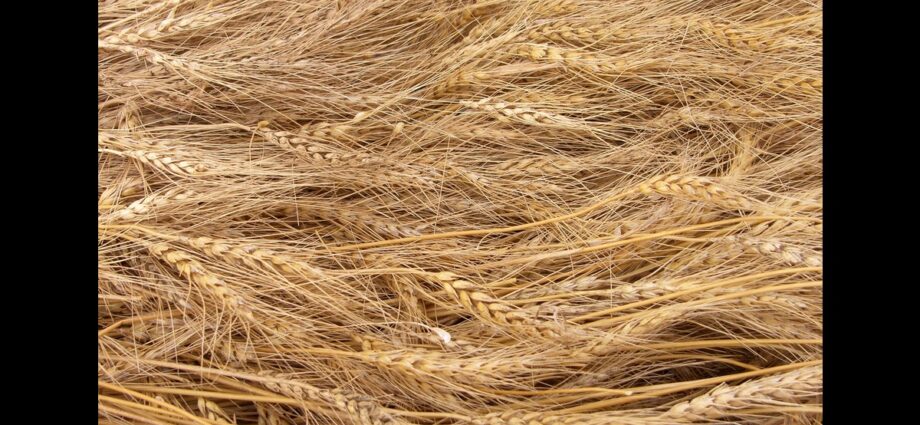In India, wheat is the primary grain crop and the source of all household income. Wheat is the most popular Rabi (winter) crop, with significant commercial trading and export. India is a nation that produces a significant amount of wheat. Wheat grows on 29.8 million hectares of land in India.
Punjab, Haryana, and Uttar Pradesh are popular states with a reputation for intensive wheat farming. However, in recent years, Madhya Pradesh is also one of the leading producers as it has observed a high area for crop production. Wheat provides a high yield to farmers. Per hectare, farmers can cultivate 12 to 13.8 quintals of wheat. Moreover, farmers can earn great incentives with the exceptional quality small tractor for agriculture.
Technical Factors for Sowing, Cultivating & Growing Wheat Crops
Let’s review some important factors for cultivating and harvesting high-yielding wheat crops.
-
Climatic Conditions for Wheat Crops
Wheat crops may thrive in temperate, subtropical, and tropical climates. The ideal temperature range for growing this crop is 20 to 25 degrees Celsius. The seeds can also germinate between 3.5 and 35 degrees Celsius.
Even in cold and snowy weather, wheat is quite prone to growing. When the warm weather of the spring season arrives, though, the growth picks back up. This crop is suitable for growing 33 millimetres above sea level.
Additionally, wheat cannot endure overly wet and chilly weather conditions. High or low temperatures can affect crop growth throughout the flowering and heading stages.
-
Soil for Wheat Cultivation
Wheat farming best suits loamy or clay loam soils with good drainage. The soil should be able to hold about average amounts of water. Wheat crops must be tolerant of waterlogging and have strong drainage capabilities. Wheat can grow on lighter soils if the crops get the right nutrients and sufficient irrigation.
-
Land preparation for Wheat Cultivation
Farmers should plough the bed, then harrow it 2-3 times with disc- or trine-type harrow instruments to prepare a well-pulverised seedbed. Furthermore, one should add 25kg/ha of 5% aldrin dust to the soil during the final ploughing to protect the wheat plants from white ants and other pests. Additionally, one should spread 35 to 40 kg of urea per acre to enhance weed seed germination.
-
Plant spacing between Wheat Plants
November through December are the ideal months to grow wheat. Soaking seeds in water overnight is advisable if the sowing process is late. The seeds should be 1-2m deep and closer together for a higher seeding rate.
-
Irrigation for Wheat Cultivation
After the initial sowing of wheat, the first irrigation must occur 3-4 weeks later. Additionally, the second and third irrigation planning should occur after 40 to 45 and 60 to 65 days, respectively.
In addition, the fourth irrigation should be 80 to 85 days after sowing. Additionally, the fifth irrigation should be 100–105 days following sowing. Additionally, the sixth watering should be 15 to 120 days following sowing.
-
Harvesting of Wheat
The wheat crop is ready for harvest when the wheat straw turns stiff, dry, and slightly brittle. Grains should be thoroughly dried to remove all significant moisture content before storing. All warehouses, godowns, bins, or storage pits should be further fumigated and moisture-free to prevent insect congestion.
Pests and Diseases in Wheat Crops – How to Prevent Them?
The principal ailments and pests that wheat crops are prone to are:
- A powdery mould
- Stem rust and yellow
- Rust-three leaf
- Foliar blights in Karnal bunt
- Unruly smut
Therefore, farmers must use high-quality pesticides throughout their crops to prevent these pests and diseases. Additionally, they must add high-quality fertiliser on the right schedule to avoid them. You can also contact local horticulture or agriculture departments to find out how to prevent these pests in the best way possible.
The best chance for the Wheat crop to deliver high yields is due to these noteworthy metrics. With a surface area of millions of hectares, wheat is the most important food crop on earth. Wheat production, however, fluctuates with the weather, the soil, and crop management techniques and is typically poor. When sowing winter wheat, best management techniques (BMPs) significantly aid farmers in obtaining the best yields and returns on investment.
Frequently Asked Questions on Wheat Cultivation
Q. How long should wheat be allowed to grow?
Ans. The maturation of wheat harvests can take up to 4 months. Farmers must determine when the crop is at its peak to plan when it will be simple to complete the harvest.
Q. What month is best for harvesting wheat?
Ans. Wheat can be grown throughout Rabi or the winter. Typically, wheat harvests are sown between November and December and harvested in April.
Q. Which type of wheat yields the most?
Ans. Winter wheat and spring wheat are two common categories of wheat. High-yielding winter wheat is sown in the fall and harvested the following spring or summer, depending on the region.
Q. What is the high wheat variety?
Ans. HI 1628 is the high-yielding wheat variety for India’s North Western Plains Zones that is suitable for timely sowing and limited watering.

